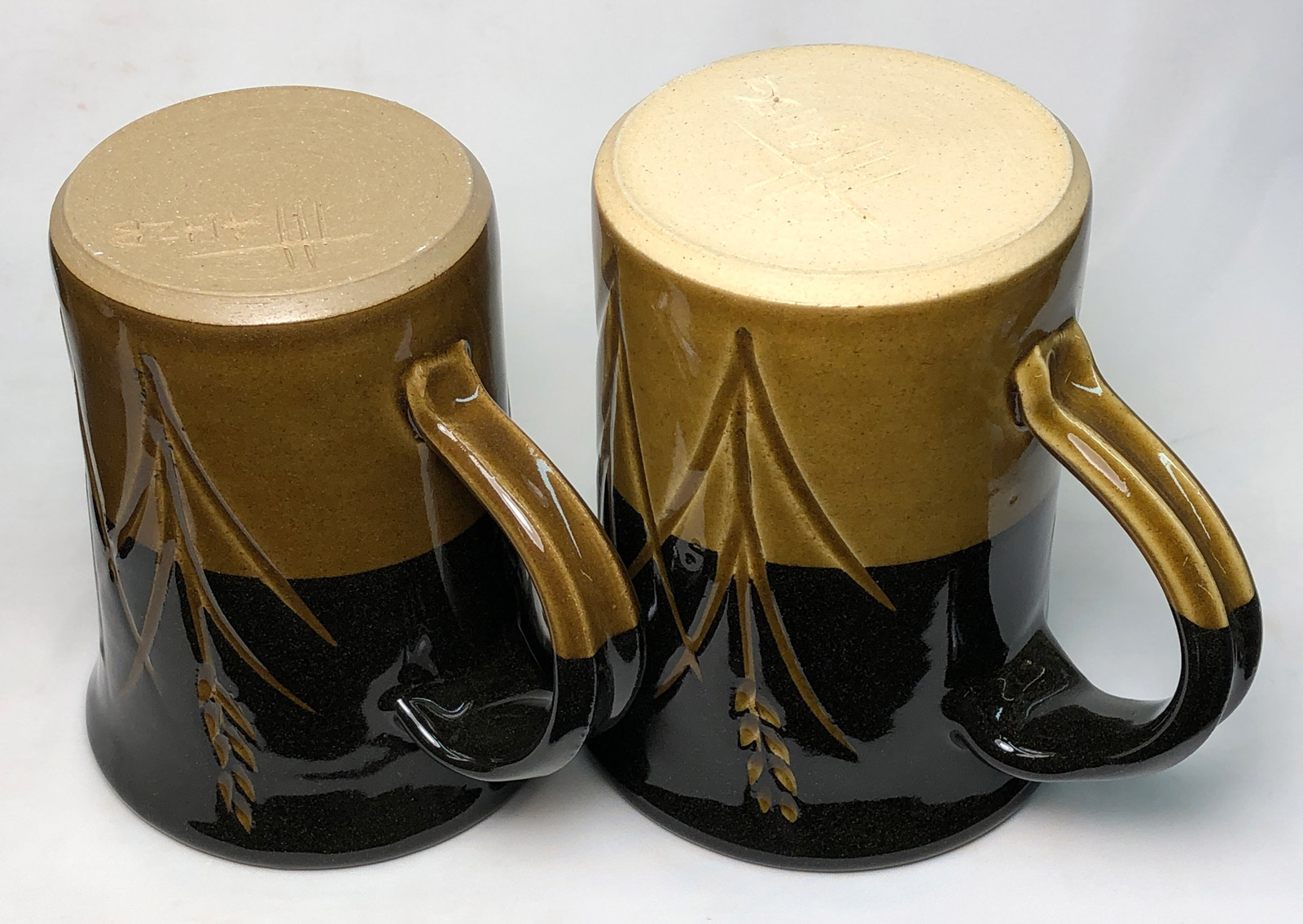Vitrification can be obvious by simple visual inspection
The unglazed surface of the left piece has a sheen, it is a product of glass development during firing to cone 6. That body is a 50:50 mix of a cone 8 stoneware and a insight-live.com/glossary/34">low fire earthenware red (a material that would normally be melted by this temperature). Together they produce this dense, almost zero-porosity ceramic. The unglazed surface on the right looks more like plaster, and it is absorbent, about 5% porosity. It is a mix of the same stoneware but with 50% ball clay. The refractory ball clay assures that the stoneware, which was already inadequately vitreous, is even more so. As you can imagine, the left piece is far stronger.
Pages that reference this post in the Digitalfire Reference Library:
Vitrification - Fired, Fired Strength, Maturity, Restaurant Ware

This post is one of thousands found in the Digitalfire Reference Database. Most are part of a timeline maintained by Tony Hansen. You can search that timeline on the home page of digitalfire.com.
